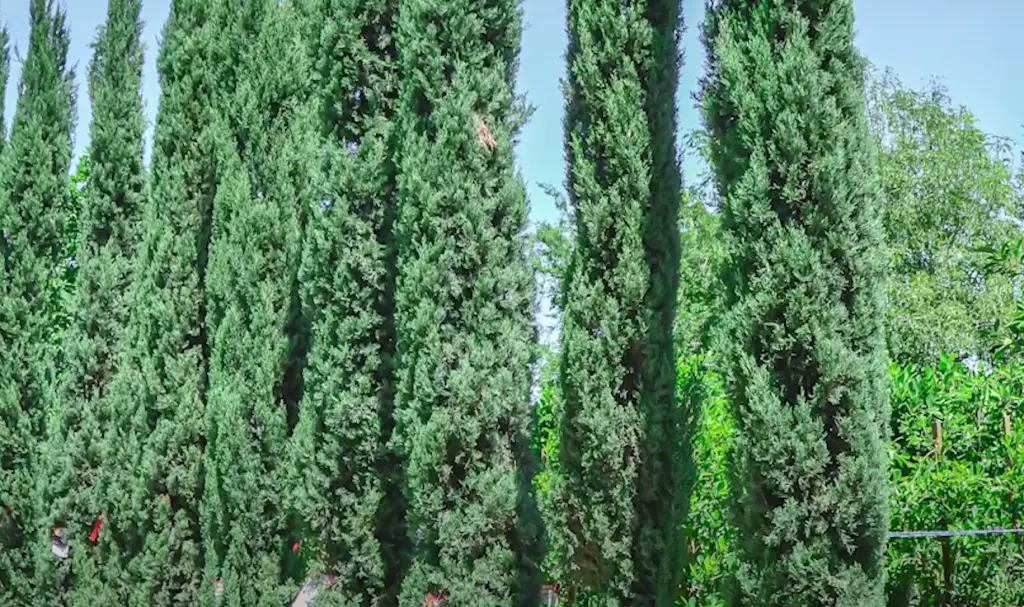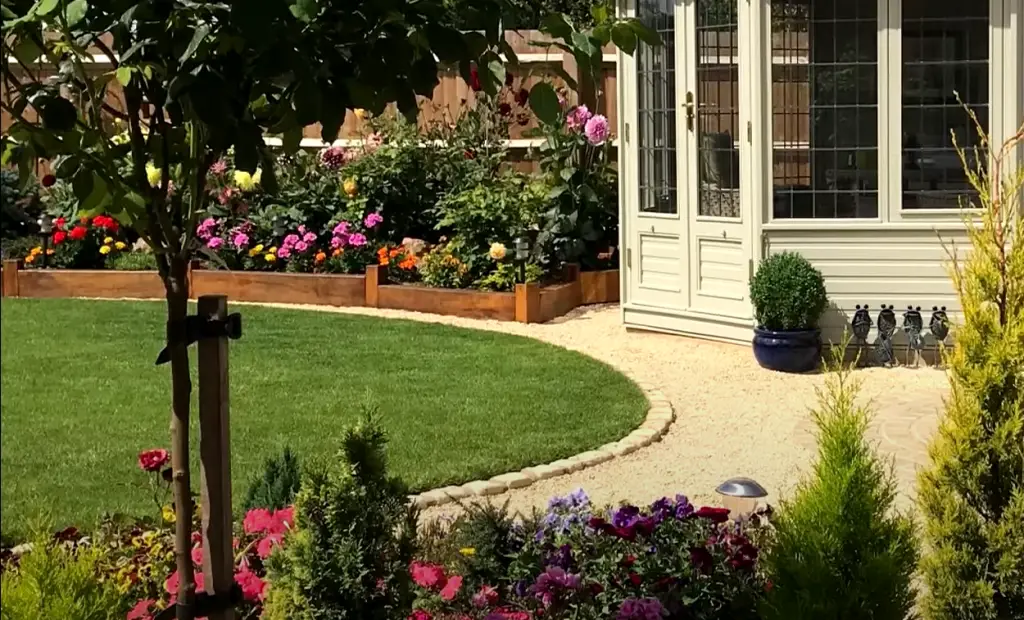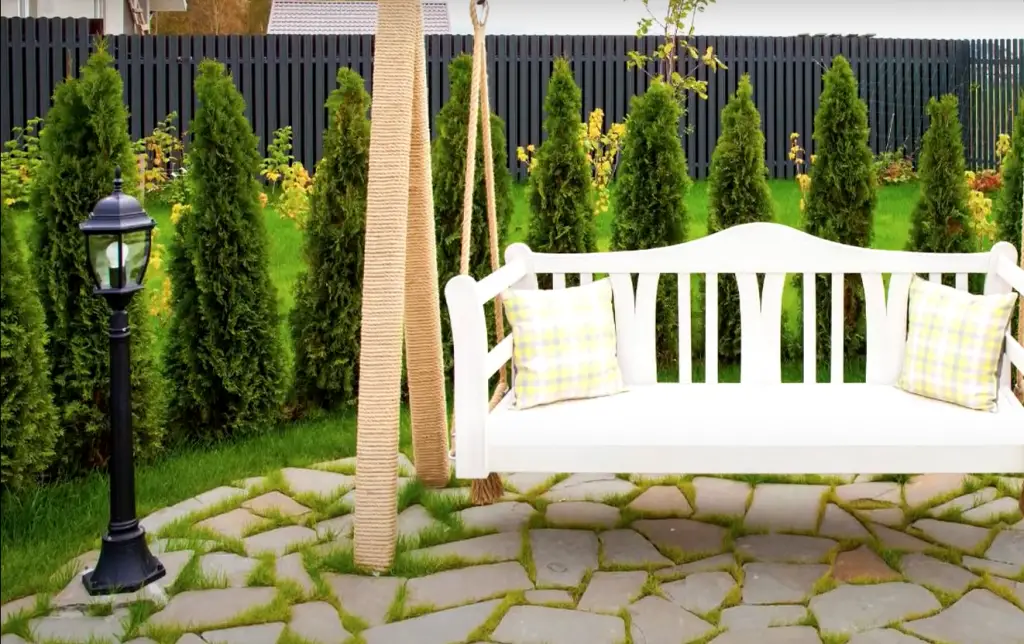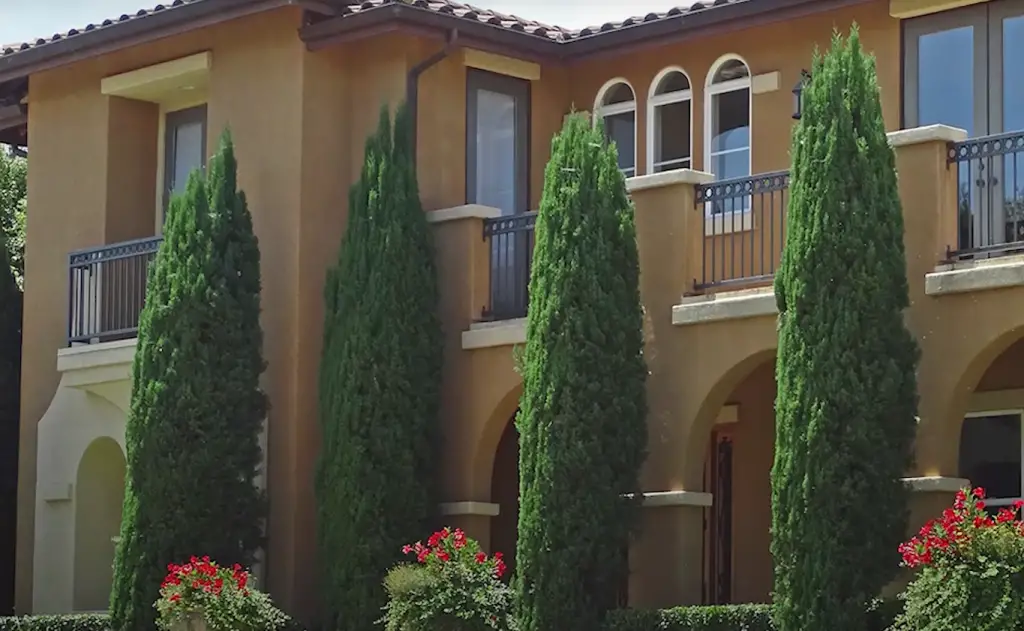Give your landscape a Mediterranean flair with the majestic Italian Cypress. This towering evergreen has been used for centuries to shape and beautify gardens, offering an architectural structure unique to its species. In this guide, you’ll learn everything you need to know about Italian Cypress landscaping ideas – from placement and maintenance, to planting tips and design inspiration.
Landscaping with Italian Cypress
Italian cypress is a great way to add structure, texture, and style to your landscape. This species of conifer tree has been used for centuries in Mediterranean gardens, providing year-round beauty. The tall, slim shape and rich green hue create a formal look that can add sophistication to any garden.

In this guide, we’ll provide full information on Italian Cypress landscaping ideas as well as useful tips for caring for and maintaining them in the landscape.
Planting Italian Cypress Trees
When planting Italian cypress trees it’s important to select the right size for your space and soil type.
Generally, they should be planted in well-draining soil and given plenty of space to reach their full height.It’s also important to choose a sunny spot as Italian cypress trees prefer full sun exposure. When planting, dig a hole twice the size of the root ball and use a blend of compost or other organic matter to fill back in around it. Water deeply after planting and provide supplemental irrigation until the tree is established.
Italian Cypress Care
Now that you have an idea of how to use Italian cypress in your landscaping plans, let’s discuss what it takes to keep them healthy and looking their best.
Italian cypress needs plenty of sunlight and well-drained soil with a pH ranging from 6.5-7.5 in order to be at its best. Keep your plants regularly watered but don’t overwater them as this can cause root rot. Be sure to provide protection from strong winds by installing windbreaks near the plants, as they are quite susceptible to damage from strong gusts. It is also important to prune them regularly in order to encourage new growth and maintain an attractive shape for your Italian Cypress trees.
Overall, Italian Cypress is a low-maintenance tree that can add beauty and drama to any landscape, as long as you give it the care it needs. With a little bit of effort, your Italian Cypress trees will provide you with years of stunning landscaping!
Light
When it comes to Italian Cypress landscaping ideas, one thing you need to consider is lighting. There are two types of lighting for your garden; accent lighting and ambient lighting. Accent lighting can be used to spotlight certain areas or features in the garden, such as the cypress trees. You can use spotlights, lanterns or wall-mounted lights for this purpose. Ambient lighting includes pathway lights and up-lighting which provide a soft glow for the entire area. These will help create an inviting atmosphere and make sure that your gorgeous cypress trees are visible at night!
Soil
Italian cypress is drought-tolerant once established, however, it needs regular watering for the first two years of growth. Select an area with well-drained soil that has good drainage. Amend the soil with organic material like compost to improve its structure and promote better water retention. When watering your Italian Cypress, water deeply and thoroughly until it reaches the roots.

This encourages deep root growth which will make your tree more resistant to drought conditions in the future. Check for moisture weekly during dry periods and reduce the amount of water during rainy season to avoid overwatering issues. In order to maintain a healthy root system, avoid planting too close or deep in overly compacted soils.
Water
Italian Cypress adds a unique flair to any Mediterranean design. This evergreen tree requires minimal water and is able to survive in drought conditions, making it an excellent choice for xeriscapes or water-wise gardens. To make sure your Italian Cypress thrives, it’s important to select a location with well-drained soil. The ideal environment should have plenty of sun and air circulation so that the tree can grow without competing with other plants for resources. For added visual interest, consider adding other trees such as olive or citrus, and use rocks, gravel or pavers to create pathways between them.
Temperature and Humidity
Since Italian Cypress is native to the Mediterranean region, it loves warm, sunny climates and generally does not do well in cold temperatures. If you live in a colder climate, you should look for other varieties of trees or shrubs that can withstand lower temperatures. In addition to the temperature, humidity is also important when planting Italian Cypress. They prefer environments with moderately high humidity levels and may not thrive if the air is too dry. To avoid problems with humidity, we recommend planting them where they can be protected from strong winds and near sources of water such as ponds or streams. This will help keep their soil moist and reduce the risk of drought stress or damage.
Fertilizer
When you’re looking to liven up your Italian Cypress landscape, one of the best ways to do that is by using fertilizer. Fertilizing can give your cypress trees the nutrients they need to thrive and grow strong roots. It will also help keep them healthy and prevent disease. When choosing a fertilizer for your cypress trees, make sure it’s specifically formulated for evergreen plants like Italian Cypresses. This type of fertilizer will have balanced nitrogen, phosphorus, and potassium levels — all essential nutrients for healthy growth. Apply the fertilizer evenly under the tree’s canopy at least once each year in early spring or late winter. Be careful not to over-fertilize as this could damage your trees! [1]
How to Grow Italian Cypress from Seed
Italian Cypress is a hardy evergreen conifer with an upright columnar form, lending itself well to formal garden designs. The elegant grey-green foliage creates a dramatic vertical element that stands out in the landscape. If you’d like to try growing Italian Cypress from seed, here’s what you need to know:
First, you’ll want to purchase Italian Cypress seeds from your local nursery or online store.
You can also pre-soak some of the seeds before planting to help speed up germination.Once you’re ready to plant, choose an area of your yard with well-draining soil and full sun exposure. Dig a shallow hole, 1/2 inch deep, for each seed. Sow the seeds in the holes, then lightly cover them with soil before watering them in. Keep the planting site moist but not soggy through germination. [2]
Young Italian Cypress trees will benefit from plenty of sunlight and moderate water during their first two to three years. As they grow you’ll want to gradually increase the amount of water they receive and reduce or limit fertilization since too much can cause root burn. Prune your trees when necessary to maintain their desired shape and size – otherwise, let nature take its course! With proper care, you should have healthy-looking Italian Cypress trees growing in your yard in no time.
Different Ideas on Landscaping With Italian Cypress
Italian cypress is a popular evergreen tree with narrow, dark green foliage that makes it a great choice for adding texture and height to your garden.

With its easy maintenance and distinct shape, Italian cypress looks elegant in many different types of landscaping settings. Whether you’re looking for an ornamental accent or a privacy screen, consider these creative ideas on how to use Italian Cypress in your landscape:
- Create an impressive entranceway by planting two symmetrical rows of Italian Cypress flanking the entryway of your home. This will create an elegant look while also providing visual interest from both indoors and outdoors.
- Use them as hedges to add structure and definition to pathways or driveways.
- Plant them along property lines to create a natural, yet sophisticated, privacy barrier.
- Plant them as a dramatic backdrop in front of water features like a fountain or pond.
- Plant them in a container and place it on your porch or patio for an outdoor accent piece.
Italian Cypress can also be used as the primary element in landscaping design – plant several of them together to create a living privacy wall. With their narrow shape and symmetrical silhouette, Italian Cypress is sure to add beauty and sophistication to any landscape!
Framing the Entrance
If you want to add a sense of formality to the entrance of your home, Italian Cypress trees can be your perfect choice. These tall evergreen trees have long and narrow column-like crowns that make them ideal for creating distinctive designs in landscaping projects. When shaping these trees into various shapes, they can also act as a soft barrier around entrances or driveways, providing both privacy and beauty. Additionally, their dense foliage makes them great windbreakers and helps reduce noise levels from busy roads nearby.
Decorating a Long Driveway
Are you looking for an excellent way to decorate a long driveway? Italian cypress is the perfect solution! This distinctive evergreen tree comes in a range of sizes, from small bushes to tall columns. When planted in rows along your driveway, it creates an impressive and elegant look that can make any property look more attractive.
You can choose to plant one or two trees per meter, depending on how much space you have available. They are low-maintenance plants that require little water and fertilizer once established, so they are ideal for homeowners who don’t want to spend too much time taking care of their landscaping.
Italian Cypress trees grow best in full sun and well-drained soil. Additionally, they should be planted in a sheltered location where high winds won’t damage them. Pruning is also important to keep the trees looking neat and healthy.
These evergreen trees can be used as a backdrop for other plants such as shrubs, perennials, annuals, or ornamental grasses. You could combine the Cypress trees with colorful flowers to create stunning and vibrant displays all year round. With careful planning and creativity, you can transform your driveway into an eye-catching masterpiece!
Making a Privacy Screen
Italian Cypress is an excellent option for making a privacy screen in your garden. This type of tree grows tall and narrow, making it perfect for creating a visual barrier between you and the outside world. To make the most out of your privacy screen, plant Italian cypresses in clusters or rows to maximize their height and density. Also consider trimming them regularly to maintain a neat appearance.

Additionally, position the trees on your property in such a way that they receive ample sunlight for optimal growth. With proper care and maintenance, your Italian Cypress Privacy Screen will offer you years of protection from prying eyes!
Creating a Windbreaker for Backyard
Italian cypress trees are very well suited for creating a windbreaker in your backyard. With their tall, narrow shape and dense foliage, they can help block strong winds that may be coming from one direction. Italian cypress trees make for an ideal windbreaker since they require very low maintenance once they are established. To create a windbreaker with them, plant several of the trees in a staggered row and then prune them as needed to keep the wall-like effect uniform. This will ensure that you get maximum protection from the elements while still having an attractive landscape design.
Planting Different Kinds Together
Italian cypress is a great choice for creating privacy screens, as well as adding structure and texture to gardens. One of the most effective ways to use Italian cypress in landscaping is to plant different varieties together. For example, you can group two or three different colors of Italian cypress together – dark green, light green, and blue-green – to create a stunning visual effect.
You’ll be amazed at how quickly your garden will take on a new personality!When planting multiple types of Italian Cypress together, be sure that they are all from the same species. Different species may not grow together well and could cause stress on the plants. You’ll also want to make sure that all of the plants are spaced properly so that they can get enough sunlight and air circulation.
Mixing With Other Companion Trees
Italian cypress trees are tall and narrow, making them perfect for adding drama to the landscape. To give your garden a more diverse look, plant other companion trees like Japanese maples or viburnums near your Italian cypresses. The addition of these trees will help break up the height of your cypresses and add some interesting shape and texture to the landscaping. You can also mix in annuals or perennials for an extra pop of color. Just be sure that any other plants you introduce don’t require too much water – after all, Italian cypresses are drought-tolerant!
For a truly unique look, try combining diverse varieties of Italian cypress into one landscape design. An array of different sizes and colors will make your garden one-of-a-kind. If you want to add some height but don’t have a lot of space, consider planting two or more Italian cypresses in the same spot. This will create an eye-catching feature that’s sure to draw the attention of passersby! [3]
Italian cypress trees can be vulnerable to pests and diseases if they’re not properly cared for. Be sure to research any companion plants you include in your design before introducing them into your garden – this will help ensure that all of your plants are healthy and happy! With the right preparation, you’ll be able to create a beautiful landscape full of lush greenery for many years to come.
Additional Tips
When landscaping with Italian cypresses, there are a few additional tips to keep in mind that will help you achieve the look you want.
- If possible, improve soil condition before planting by adding organic matter such as compost or aged manure. This will ensure optimal growth and health of your trees.
- Planting multiple cypresses in close proximity is a great way to create a privacy hedge or screen. When planning this type of installation, be sure to leave enough room for each tree to grow without competing for resources.
- Taller varieties of cypress can also be used as an ornamental feature or focal point in your garden area. Make sure you have adequate space for them to reach their mature size before planting.
- When pruning, try to keep the natural shape and form of the cypress in mind as much as possible. Avoid cutting off too many branches at once or taking away too much foliage from the top of the plant.

By following these additional tips, you can ensure that your Italian cypress landscaping project is a success!
FAQ
What looks good with Italian cypress?
Italian cypress is a great choice for creating an elegant look in your garden or yard. The dark, towering columns add a stately touch to any landscape and pair well with other Mediterranean plants like lavender, rosemary, and olive trees. You can also contrast the sharp lines of the Italian cypress with rounded forms such as hydrangeas or peonies. If you want to create a bold statement, combine them with bright colors from flowers like marigolds or poppies. Finally, adding some decorative elements such as statues or trellises will provide additional interest to your landscaping design. [4]
Where is the best place to plant Italian cypress?
Italian cypress is a versatile tree that can be used in various ways to landscape your garden or yard. To successfully plant cypress trees, it is crucial to ensure that the planting conditions are suitable. They need full sun and well-drained soil to survive and thrive. Planting near a wall or fence can also provide protection from wind and cold temperatures. Avoid areas of high foot traffic as these trees do not tolerate trampling very well. As they grow tall, you may want to consider how much space you have available before deciding on where to plant them. To get the most out of your Italian cypress landscaping ideas, plan carefully before planting!
The best place to plant this tree is in a sunny spot with adequate drainage and protection from the wind. If possible, it should be placed near a wall or fence for extra shelter during cold winters. Additionally, before planting, make sure you have enough space as these trees can grow up to 6 meters tall! With proper planning and care, you can create the perfect landscape with your Italian Cypress ideas.
Can Italian cypress be kept short?
Yes, the Italian cypress can be kept short. Pruning is a great way to keep the cypress looking its best and maintained at a desirable size. If you have an Italian Cypress that was planted too close together, pruning can help to create more space between the trees so they do not grow together. To achieve the desired shape and height of an individual tree, lighter pruning should be done on a regular basis throughout the year. Heavier pruning for shaping should only be done during certain times of the year such as in late winter or early spring when new growth begins. Doing so will ensure that your Italian Cypress remains healthy and attractive. It’s important to note that over-pruning can damage or kill the tree, so it’s important to be careful when pruning and make sure you are not removing too much foliage. With proper pruning and maintenance, you can keep your Italian Cypress looking its best for years to come. [5]
Can you control the height of an Italian cypress tree?
Italian cypress trees, which are scientifically named as Cupressus sempervirens, are a commonly chosen option for landscaping with evergreen trees. They are known for their tall and narrow forms, providing a distinctive look in the yard. Many homeowners choose to plant Italian cypress to create privacy screens or provide a formal look in the landscape. But can you control their height?

The answer is yes, but only to some degree. You have some control over its eventual height by choosing the right variety and planting it in an area that gets enough sunlight and has well-draining soil. However, once it starts growing, controlling its height becomes more difficult. Pruning is an option, but since Italian cypress trees are very slow-growing, you won’t be able to contain the height of the tree through this method.
If you’re looking for a way to control the height of Cypress trees, consider planting dwarf varieties such as ‘Stricta.’ This variety grows only about 10-15 feet tall and has a smaller width than taller versions, making it ideal for homeowners who want to keep their trees at a certain height. Another option is to use root pruning. This involves cutting back some of the roots in order to stunt the tree’s growth. While this isn’t an exact science, it can help control how high your Italian Cypress tree grows over time. [6]
Useful Video: Italian Cypress Adds Privacy
Conclusion
It is easy to see why Italian Cypress trees can be a wonderful addition to any landscape. With their unique form and variety of colors, they add an interesting element and texture to the yard or garden. They are also low maintenance and require minimal care, making them a great choice for those who want beautiful landscaping without a lot of fuss. With just a few simple tips, you can quickly create an attractive landscape with Italian Cypress trees that will last for years. So enjoy your new landscape and let these versatile trees bring life and beauty to your outdoor area!
References:
- https://www.moonvalleynurseries.com/italian-cypress-care-guide
- https://www.gardenguides.com/89307-germinate-italian-cypress-seeds.html
- https://www.evergreenseeds.com/landscaping-with-cypress-trees/
- https://www.weekand.com/home-garden/article/grows-well-italian-cypress-18061366.php
- https://www.gardenersworld.com/how-to/grow-plants/how-to-grow-italian-cypress/
- https://www.thespruce.com/italian-cypress-tree-growing-guide-7108396










Leave a Reply
View Comments